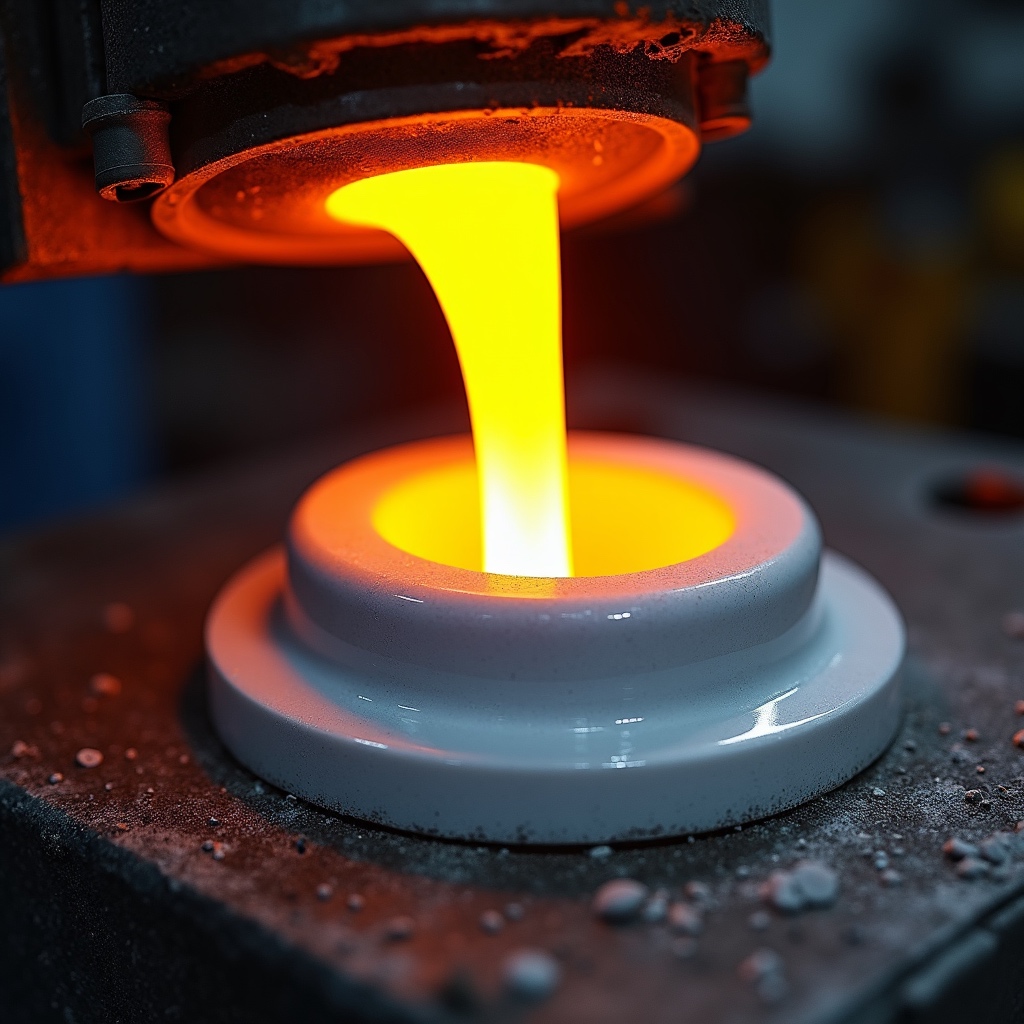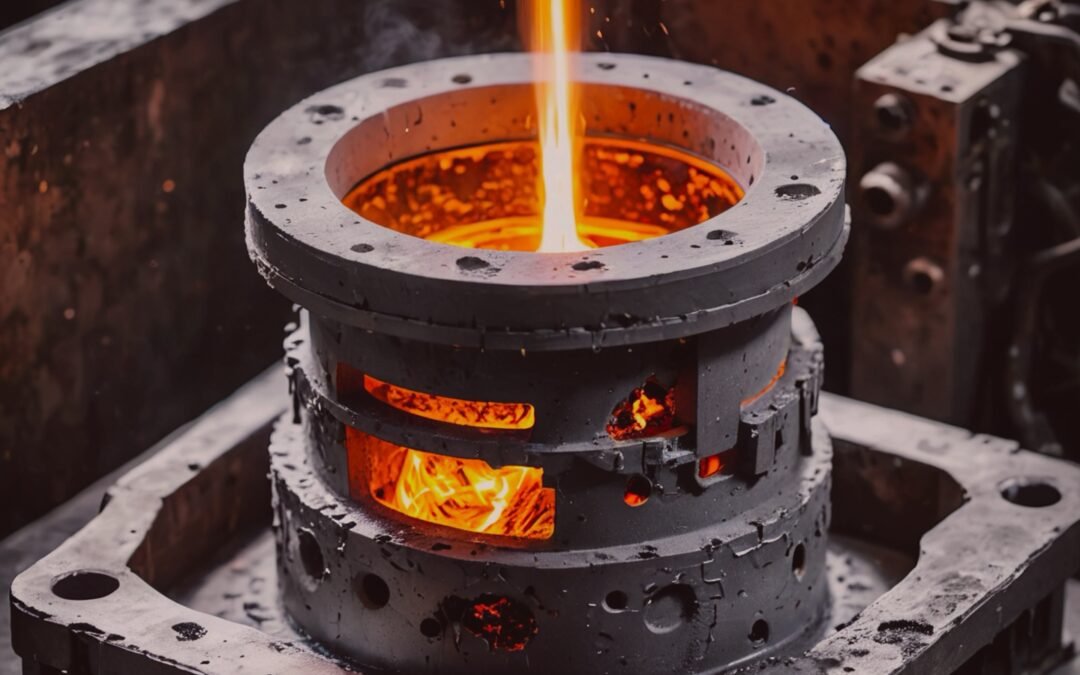Aluminum casting is a cornerstone of modern manufacturing, providing the ability to produce complex, lightweight, and durable components across various industries. Aluminum’s excellent strength-to-weight ratio, corrosion resistance, and recyclability make it a preferred material for applications ranging from automotive to aerospace. However, the efficiency and precision of aluminum casting processes often rely on advanced materials such as technical ceramics. These materials, particularly aluminum titanate, are critical in enhancing the performance and quality of the casting process.
Types of Aluminum Casting Processes
1. Sand Casting
Sand casting is one of the oldest and most versatile methods of casting metals. It involves creating a mold from a mixture of sand, clay, and water. A pattern of the desired part is used to form the mold cavity, into which molten aluminum is poured. Once the aluminum solidifies, the mold is broken away to retrieve the cast part.
– Applications: Sand casting is commonly used for large or complex components in low to medium production volumes. Examples include engine blocks, pump housings, and heavy machinery parts.
– Advantages: The process is highly adaptable, suitable for intricate designs, and cost-effective for prototypes or small production runs.
2. Die Casting
Die casting involves injecting molten aluminum into a reusable steel mold, or die, under high pressure. The high-pressure injection ensures excellent dimensional accuracy and a smooth surface finish.
– Applications: This method is ideal for mass production of precise and intricate parts, such as automotive components, electronic housings, and consumer goods.
– Advantages: Die casting offers high-speed production, reduced machining requirements, and consistent quality.
3. Permanent Mold Casting
Permanent mold casting employs reusable metal molds, typically made from steel or iron. Unlike die casting, this process relies on gravity or low-pressure filling rather than high-pressure injection. The molds are preheated to prevent thermal shock and ensure consistent results.
– Applications: This method is suitable for medium production runs and is used for components like compressor housings, valve bodies, and gears.
– Advantages: It provides better mechanical properties and surface finish compared to sand casting, making it a preferred choice for moderately complex shapes.
4. Investment Casting (Lost Wax Casting)
Investment casting uses a wax model of the desired part, which is coated with a ceramic shell to form a mold. Once the ceramic hardens, the wax is melted away, leaving a cavity that is filled with molten aluminum.
– Applications: Investment casting is renowned for its ability to produce intricate and highly detailed parts, such as aerospace components, medical implants, and fine jewelry.
– Advantages: The process provides exceptional surface finishes and can accommodate complex geometries with minimal post-processing.
5. Gravity Casting
Gravity casting involves pouring molten aluminum into a mold, allowing gravity to naturally fill the cavity. It can be performed with sand molds, permanent molds, or even ceramic molds.
– Applications: This technique is often used for producing large, simple industrial parts, such as frames, engine components, and structural pieces.
– Advantages: Gravity casting is cost-effective for straightforward designs and requires minimal equipment.

The Role of Technical Ceramics in Aluminum Casting
Technical ceramics, particularly aluminum titanate (Al₂TiO₅), have become indispensable in enhancing aluminum casting processes. These advanced materials are engineered to withstand the extreme conditions of casting, including high temperatures, thermal cycling, and exposure to molten aluminum. Here are the primary ways technical ceramics contribute to aluminum casting:
1. Mold Design and Durability
Aluminum titanate is widely used in the production of molds due to its exceptional thermal stability and resistance to cracking under high temperatures. In die casting and permanent mold casting, the use of aluminum titanate molds ensures longer service life and reduces the frequency of mold replacements.
This durability translates to lower maintenance costs and higher production efficiency, especially in high-volume applications where molds are subjected to repeated thermal cycling.
2. Non-Wetting Properties
One of the standout qualities of aluminum titanate is its non-wetting behavior with molten aluminum. This property prevents molten aluminum from adhering to molds, linings, or channels, reducing the risk of clogging and improving the overall flow of the metal. This not only enhances casting precision but also minimizes downtime caused by cleaning and maintenance.
3. Thermal Management
Aluminum titanate excels in thermal shock resistance, allowing it to withstand rapid changes in temperature without cracking or deforming. This property is crucial for maintaining uniform cooling rates within molds, which directly affects the mechanical properties and dimensional accuracy of the final product.
By facilitating controlled cooling, technical ceramics help reduce the likelihood of defects like warping, shrinkage, or porosity in cast parts.
4. Enhanced Casting Quality
The use of aluminum titanate in casting processes improves the overall quality of finished components. Its chemical inertness ensures that the material does not react with molten aluminum, preserving the integrity of the cast part. Furthermore, the smooth surfaces of ceramic molds or coatings contribute to superior surface finishes and precise dimensions, reducing the need for additional machining or polishing.
5. Protective Coatings
Technical ceramics are often applied as coatings to protect metal molds from the harsh conditions of casting. Aluminum titanate coatings shield molds from oxidation and thermal degradation, extending their operational lifespan and maintaining consistent casting performance.
For example, in permanent mold casting, ceramic linings made from aluminum titanate prevent wear and thermal fatigue, enabling manufacturers to achieve higher productivity with fewer interruptions.
Innovations and Future Prospects
Advancements in technical ceramics continue to push the boundaries of what is possible in aluminum casting. Companies like Techceramic-M JSC have refined aluminum titanate formulations to provide unparalleled performance in mold design and thermal management. Their expertise ensures that these materials meet the highest standards of quality, reliability, and non-reactivity.
The future of aluminum casting lies in the seamless integration of cutting-edge materials like technical ceramics. As industries demand lightweight, durable, and highly intricate components, aluminum casting processes will increasingly rely on these advanced materials to deliver precision and efficiency.
Conclusion
The evolution of aluminum casting processes has been marked by a drive for greater efficiency, precision, and versatility. From sand casting to die casting and investment casting, each method offers unique advantages for specific applications. However, the integration of technical ceramics, particularly aluminum titanate, has revolutionized these processes.
With their ability to withstand extreme conditions, enhance mold performance, and improve casting quality, technical ceramics are essential to modern manufacturing. As industries continue to innovate, the synergy between aluminum casting techniques and advanced ceramic materials will remain a cornerstone of technological progress, meeting the ever-growing demand for high-performance components.

